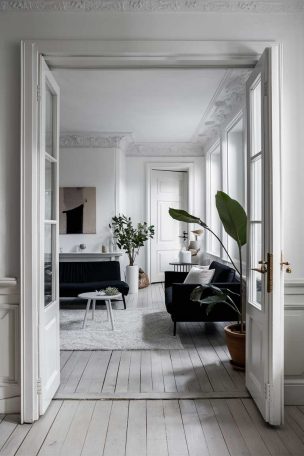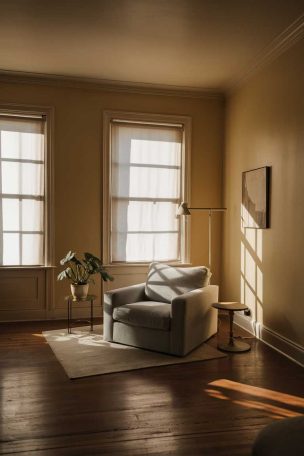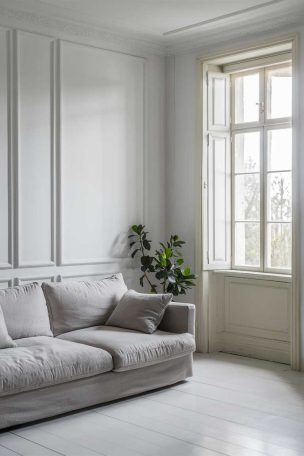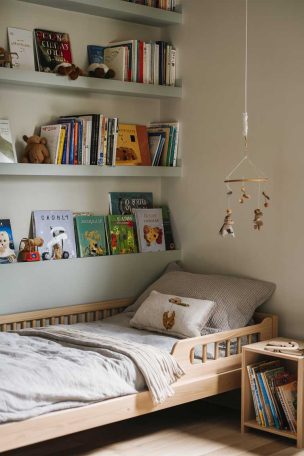In a world that often seems to value excess, there’s a growing movement that’s turning heads and challenging our notions of what it means to live well. Welcome to the world of minimalist living in tiny houses – a lifestyle that’s as fascinating as it is transformative.
The Philosophy of Minimalist Living
At its core, minimalist living in a tiny house is about stripping away the unnecessary to focus on what truly matters. It’s a deliberate choice to live with less, but paradoxically, many tiny house dwellers find they gain so much more.
Core Principles
The tiny house movement isn’t just about living in a smaller space; it’s a whole philosophy centered on intentionality and simplicity. Imagine a life where every item you own serves a purpose or brings you joy. That’s the essence of minimalist living in a tiny house.
People who embrace this lifestyle often find themselves prioritizing experiences over possessions. Instead of working longer hours to pay for a bigger house filled with more stuff, they’re freeing up time and resources to travel, learn new skills, or simply enjoy life’s simple pleasures.
It’s not always an easy transition, mind you. Our society has conditioned us to equate success with material possessions. But those who make the leap often report a sense of liberation that’s hard to match.
Benefits of Minimalist Living in Tiny Houses
Now, you might be wondering, “What’s in it for me?” Well, quite a lot, actually. Let’s break it down:
Financial Freedom
One of the most immediate and tangible benefits is the financial relief. Tiny houses typically cost a fraction of what you’d pay for a traditional home. We’re talking purchase prices that often fall under $50,000, compared to the median home price in the U.S., which hovers around $400,000.
But it’s not just the initial cost. Think about the ongoing savings:
- Lower utility bills (some tiny house owners report monthly bills under $20!)
- Reduced property taxes
- Less spent on furnishings and decor
- Minimal maintenance costs
All these savings add up, potentially allowing you to work less, travel more, or invest in experiences that truly enrich your life.
Environmental Sustainability
If you’ve ever felt guilty about your carbon footprint, a tiny house might be your ticket to eco-friendly living. These diminutive dwellings use significantly less energy to heat, cool, and power. Many tiny house enthusiasts take it a step further by incorporating solar panels, rainwater collection systems, and composting toilets.
The result? A dramatically reduced environmental impact. You’re not just talking about being green; you’re living it every day.
Psychological Well-being
Here’s where things get really interesting. Many people who downsize to a tiny house report feeling happier and less stressed. There’s something liberating about letting go of excess stuff and focusing on what truly brings you joy.
Without the constant pressure to acquire more or keep up with the Joneses, you might find yourself with more mental space for creativity, relationships, and personal growth. It’s not uncommon for tiny house dwellers to report improved relationships and a greater sense of purpose.
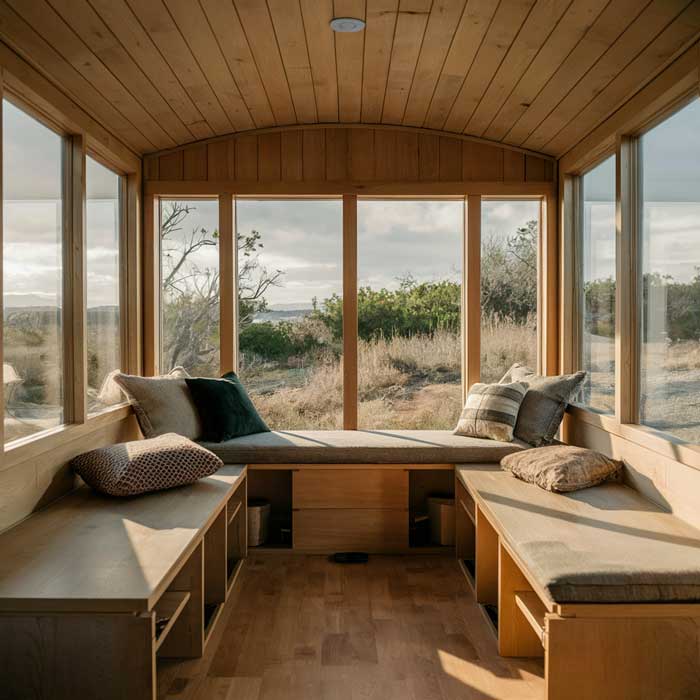
Transitioning to a Tiny House Lifestyle
Alright, so you’re intrigued. But how do you actually make the leap? Let’s walk through it step by step.
Preparatory Steps
Defining Personal Minimalism Goals
Before you start throwing things out, take a moment to reflect. What does minimalism mean to you? Are you looking to reduce stress, save money, or live more sustainably? Maybe it’s all of the above.
Write down your goals and vision. How do you want your home to serve you? What values do you want your space to reflect? This clarity will guide your decisions and keep you motivated when the going gets tough.
Systematic Decluttering
Now comes the challenging part – decluttering. But don’t worry, we’re going to tackle this systematically:
- Start small: Begin with a single drawer or closet. This quick win will boost your confidence.
- Use the one-year rule: If you haven’t used an item in the past year, it’s probably time to let it go.
- Create a decluttering schedule: Set aside regular time for decluttering. Maybe it’s an hour every Sunday or 15 minutes daily. Consistency is key.
- Be ruthless but kind to yourself: It’s okay to keep sentimental items, but be honest about what truly holds value for you.
Remember, this process isn’t about deprivation. It’s about making room for what matters most.
Design and Organization Strategies
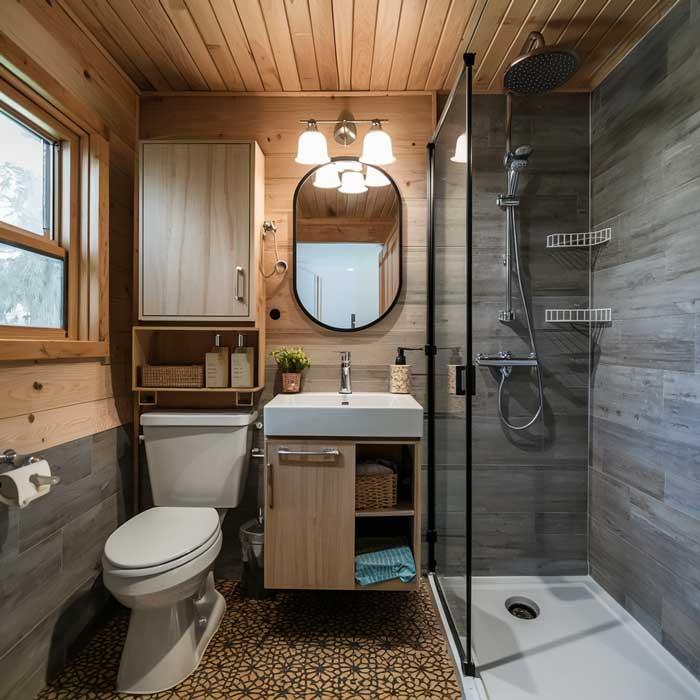
Maximizing Storage Solutions
In a tiny house, every inch counts. Here’s where you can get creative:
- Invest in multifunctional furniture: A bed with built-in storage, a dining table that folds into the wall, or an ottoman that doubles as a storage chest.
- Utilize vertical space: Wall-mounted shelves, pegboards, and hanging organizers can turn empty wall space into valuable storage.
- Implement hidden storage: Under-stair drawers, false floors, and built-in cabinets can hide clutter while maintaining a clean aesthetic.
Embracing Negative Space
Here’s a counterintuitive tip: don’t try to fill every nook and cranny. Negative space – areas left intentionally empty – can make your tiny house feel more spacious and serene.
Keep surfaces clear and arrange furniture to allow for easy movement. This not only creates a sense of openness but also makes your space more functional.
Thoughtful Color Palette Selection
Colors can dramatically affect how spacious your tiny house feels. Generally, lighter colors make spaces feel larger and more open. Consider a neutral base palette with whites, soft grays, or warm earth tones.
If you love color, don’t despair! You can add pops of your favorite hues through artwork, throw pillows, or small decor items. The key is to use these accents sparingly to maintain a cohesive and uncluttered look.
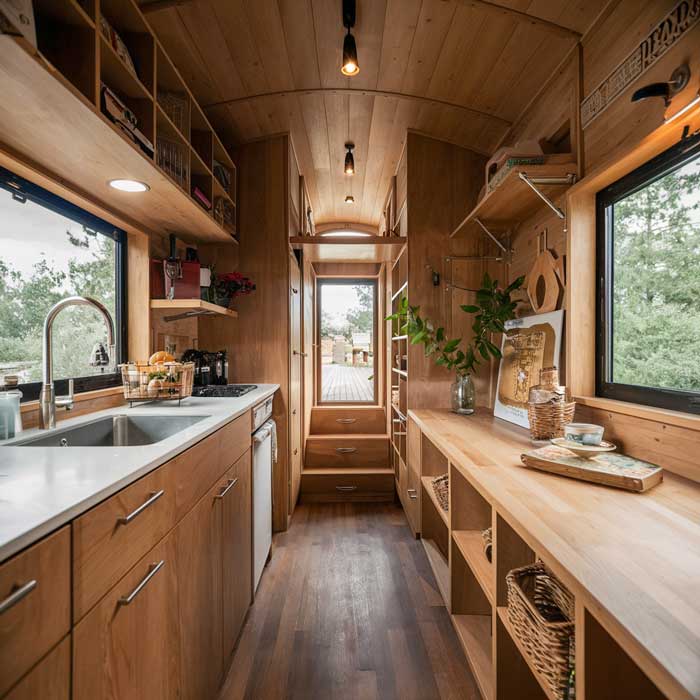
Overcoming Challenges in Tiny House Living
Let’s be real – living in a tiny house isn’t all Instagram-worthy moments and magical downsizing. There are challenges, but with some creativity and patience, they’re far from insurmountable.
Space Limitations
One of the biggest hurdles is figuring out how to pursue your hobbies and interests in a compact space. If you’re a bookworm, you might need to embrace e-books or frequent your local library. Love to cook? You’ll become a master of efficient meal prep and multifunctional kitchen tools.
For those who work from home, creating a dedicated workspace can be tricky. Consider a fold-down desk or a convertible living area that can transform into an office during work hours.
Lifestyle Adjustments
Transitioning to a tiny house often requires a significant mindset shift. You’ll need to be more intentional about your purchases and more diligent about organization.
Privacy can be another concern, especially if you’re sharing your tiny house with a partner or family. Setting clear boundaries and creating designated personal spaces, however small, can help maintain harmony.
Clutter Management
In a tiny house, clutter can quickly become overwhelming. Implement a “one in, one out” policy – for every new item you bring in, an old one must go. Regular decluttering sessions are crucial to maintain your minimalist environment.
Mindful consumption is key. Before buying anything, ask yourself: Do I really need this? Where will I store it? Does it align with my values and goals?
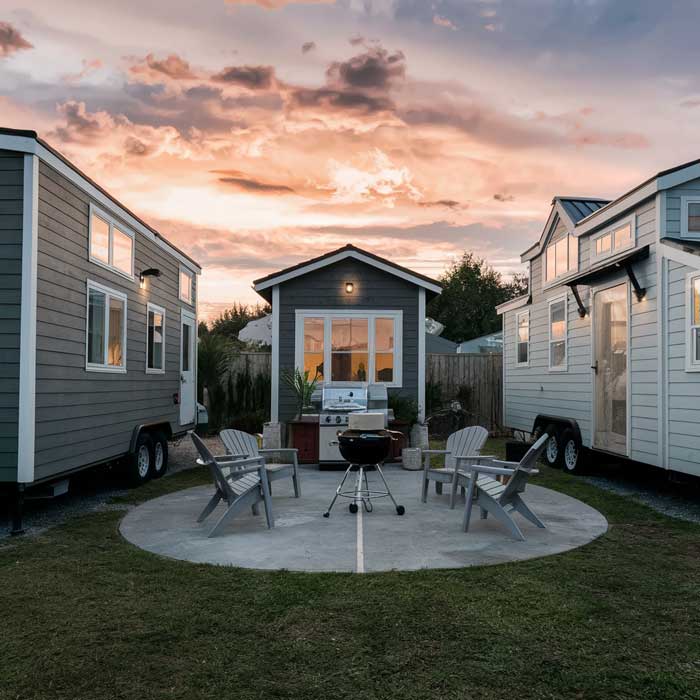
Building Community in the Tiny House Movement
One of the unexpected joys of tiny house living is the sense of community it fosters. There’s something about choosing an alternative lifestyle that naturally draws like-minded individuals together.
Finding Your Tribe
Many cities now have tiny house meetups or festivals where you can connect with fellow enthusiasts. Online forums and social media groups are great for sharing tips, asking for advice, or simply connecting with others who understand your lifestyle.
Some tiny house dwellers even choose to live in dedicated tiny house communities, sharing resources and creating a tight-knit neighborhood.
Navigating Social Dynamics
Hosting friends in a tiny house requires some creativity, but it’s far from impossible. Outdoor spaces become extensions of your home, perfect for barbecues or stargazing nights. Many tiny house owners become experts at efficient entertaining, hosting intimate dinner parties or cozy movie nights.
It’s also important to address misconceptions about tiny house living. Be prepared to explain your choices to curious (and sometimes skeptical) friends and family. Your enthusiasm and the visible benefits of your lifestyle often speak louder than words.
Sustainability and Self-Sufficiency in Tiny Houses
Many tiny house dwellers are drawn to the lifestyle for its potential for sustainable, self-sufficient living. Here’s how some are taking it to the next level:
Eco-Friendly Features
- Solar panels for off-grid living
- Rainwater collection and greywater systems
- Composting toilets to reduce water usage
- Natural and recycled building materials
Urban Homesteading in Tiny Spaces
Even with limited space, you can embrace elements of self-sufficiency:
- Vertical gardens or window boxes for growing herbs and vegetables
- Compact composting systems for reducing waste
- DIY projects for home maintenance and improvements
These practices reduce your environmental impact and foster a deeper connection with your living space and the natural world.
The Future of Tiny House Living
As the tiny house movement grows, we’re seeing exciting developments on the horizon.
Evolving Trends
Smart home technology is making its way into tiny houses, allowing for even more efficient use of space and resources. Imagine voice-controlled lighting, temperature, and security systems all optimized for a tiny footprint.
We’re also seeing innovations in modular designs, allowing tiny houses to expand or contract based on changing needs. This flexibility could make tiny living accessible to an even wider range of people.
Addressing Legal and Zoning Challenges
One of the biggest hurdles facing the tiny house movement is navigating local regulations and building codes. Many areas still don’t have provisions for homes under a certain square footage.
However, as the movement gains traction, more municipalities are adapting their laws to accommodate tiny houses. Advocacy groups are working hard to promote tiny house-friendly policies, arguing for their potential to address housing shortages and promote sustainable living.
Conclusion
Minimalist living in a tiny house isn’t just a trend – it’s a reimagining of what a home can be. It’s about creating a space that reflects your values, supports your goals, and allows you to live life on your own terms.
Is it challenging? Absolutely. But for those who embrace it, the rewards can be immeasurable. Financial freedom, environmental consciousness, and a life focused on experiences rather than possessions – these are just a few of the benefits tiny house dwellers report.
As we face growing environmental concerns and a housing market that’s increasingly out of reach for many, the tiny house movement offers a compelling alternative. It challenges us to think differently about our needs, our impact, and what truly makes a house a home.
Whether you’re seriously considering making the leap to a tiny house or simply curious about incorporating minimalist principles into your current lifestyle, remember this: at its heart, minimalism isn’t about less. It’s about making room for more – more freedom, more experiences, and more of what truly matters to you.
So, are you ready to think big by living tiny?


